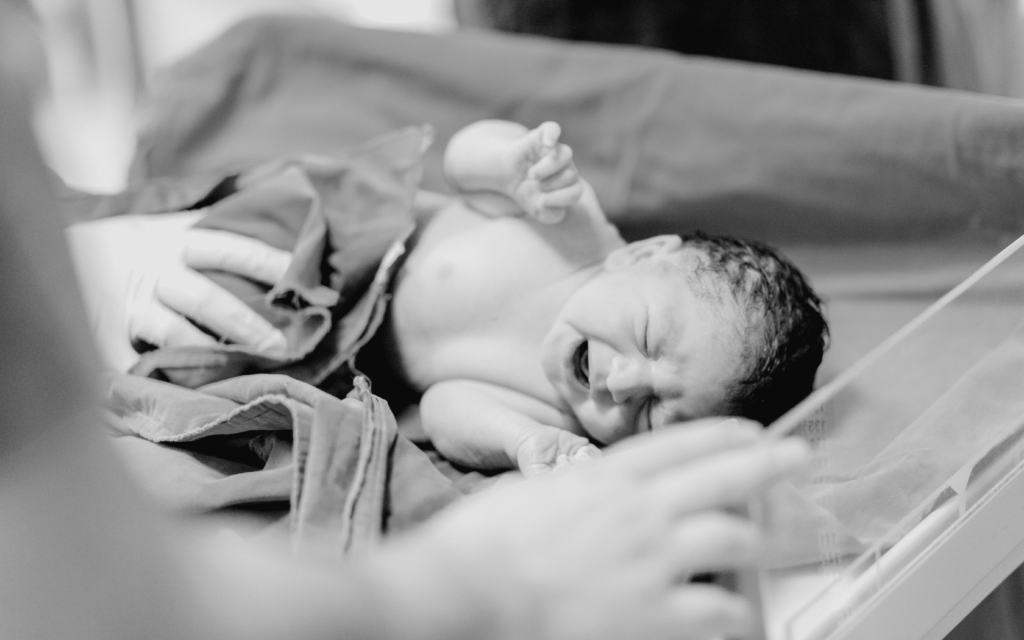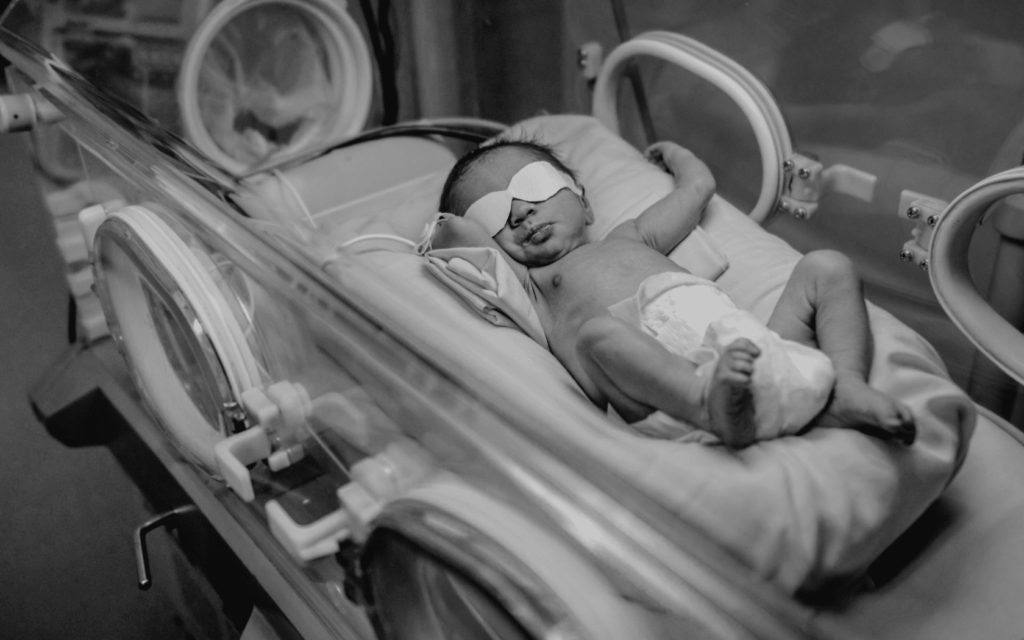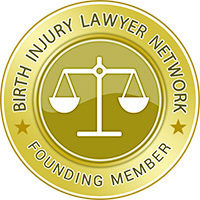A precious baby has just entered the world. All seems well. But a silent poison is coursing through the baby’s body: bilirubin. Bilirubin itself isn’t dangerous. But it becomes poisonous when there’s too much of it, leading to kernicterus in neonates.
Neonatal kernicterus is a serious neurological disorder. It’s very rare because it’s highly preventable. If doctors detect high bilirubin levels early, they can stop kernicterus from developing.
If your baby developed kernicterus after receiving inadequate care in a hospital, you may have grounds to sue. Contact our medical malpractice team to discover your legal options.

What is Neonatal Kernicterus?
Kernicterus is a condition that can happen when there’s too much bilirubin in a baby’s body. Bilirubin is a yellow substance that forms when red blood cells break down. Usually, our bodies can get rid of it. But in babies, it can sometimes build up.
When there’s too much bilirubin in the blood, it’s called hyperbilirubinemia. Hyperbilirubinemia causes jaundice, a yellowing of the skin and eyes. Now, jaundice is often harmless, often clearing up within a couple of weeks. But that’s only if doctors diagnose and treat it early.
If hyperbilirubinemia is left “undefeated”, it can evolve into a much bigger, stronger, and scarier foe: kernicterus. Kernicterus specifically affects the brain. It can lead to deafness, cerebral palsy, and other complications. So doctors mustn’t let a case of jaundice slip past them.
What Causes Kernicterus in Neonates?
The liver is like a “recycling center” for red blood cells. It breaks down old red blood cells, creating bilirubin. Our bodies have a system for getting rid of bilirubin, and it finds its way out in our urine and stool. But a newborn’s system is still getting the hang of things.
Knowing this, it’s no surprise that more than 50% of babies get jaundice after birth. Yellowish skin isn’t anything to worry about. It’s not painful for babies. But it’s a sign that there’s too much bilirubin in the blood. Doctors shouldn’t allow it to get higher and cause kernicterus.

Symptoms of Kernicterus in Newborns
When a baby has jaundice, you’ll first notice yellow skin on their face and chest. Then it can spread to their eyes, stomach, arms, and legs. As soon as they spot this tell-tale sign, doctors should treat the baby and ensure bilirubin levels don’t climb and cause neonatal kernicterus.
When levels of bilirubin skyrocket, they invade the brain and harm the central nervous system. This can cause more severe symptoms, such as:
- Difficulty waking up or staying awake
- Trouble sucking or feeding
- High-pitched crying or irritability
- Arching the back and neck
- Difficulty with movement, or looking “floppy”
- Muscle stiffness
- Fever
Late-stage kernicterus in neonates can also cause symptoms like erratic eye movements, seizures, and coma.
Kernicterus Treatment
If a baby’s bilirubin levels reach higher than 25 milligrams, doctors need to treat them for kernicterus. Here’s what that treatment could involve:
- Phototherapy, or light treatment. It involves exposing the baby’s skin to a special type of light. The light helps break down bilirubin so the baby’s body can eliminate it more easily.
- Increase feeding. If a baby drinks more milk, he may be able to urinate more and get rid of bilirubin faster.
- Transfusion. This process involves removing some of the baby’s blood and replacing it with donor blood.
Unfortunately, if brain damage occurs before a child gets treated for excess bilirubin, there’s no way to reverse it. Doctors can only try to lower bilirubin levels and prevent further brain damage.
Long-Term Consequences of Kernicterus
Neonatal kernicterus can cause long-term neurological damage. The list of potential consequences includes:
- Deafness or hearing loss
- Cerebral palsy
- Intellectual disabilities
- Vision problems
- Speech delays
- Facial and oral muscle control issues
- Behavioral and emotional issues

Kernicterus in Newborns and Medical Negligence
More often than not, kernicterus is preventable. There’s no excuse for letting jaundice go untreated. But medical negligence occurs every day, for a variety of reasons.
Understaffing or poorly trained staff can explain why some children don’t receive treatment for high bilirubin levels. Also, there have been cases where doctors have failed to recognize jaundice in children with darker skin. Whatever the case, failing to diagnose and treat jaundice or kernicterus can constitute medical negligence.
If your baby developed complications from neonatal kernicterus, you may have a valid claim. Filing a malpractice claim is no walk in the park. But the malpractice specialists at Hampton & King have traveled down this road many times. Let us show you the way. Call now to set up your free consultation.












